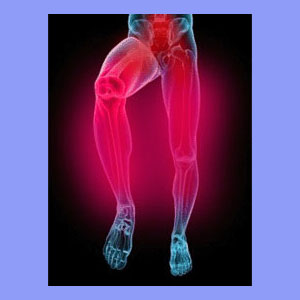
A sciatica flare-up is one of the most dreaded occurrences for anyone with a history of acute back and leg pain. A flare-up can happen for any number of possible reasons, or no particular reason at all, coming on suddenly or gradually to make life a misery for any affected soul.
Recurrent flare-ups are the most commonly reported pattern among sciatica sufferers. The vast majority of patients demonstrate some degree of daily chronic symptoms, which are not typically disabling. However, on occasion, these same patients endure serious episodes of acute pain which may land them in bed for hours, days or even weeks. These terrible periods are known as flare-ups.
This discussion will focus on flare-ups of sciatic nerve symptoms and detail why they might occur and how they may be resolved.
What is a Sciatica Flare-Up?
Flare-ups describe a condition where sciatica symptoms become very acute and severe. This may occur after an actual or perceived injury or may come about idiopathically. Many patients with a chronic back and leg pain condition will endure countless sciatica flare-ups as part of their normal life. This can cause huge amounts of anxiety and make planning for any future events very stressful. Ironically, it is this stress which often contributes to the flare-up to begin with, since the mindbody interactions are a known cause of many sciatica expressions.
Flare-ups play havoc with the emotional state of the poor patient, not ever letting them rest easily, since the next agonizing attack may be just around the corner.
Causes of Painful Flare-Ups
Sudden traumatic injury can certainly cause a flare-up. However, in these cases, the patient knows the reason for their pain and generally heals in an indicated time span.
Sleeping in a strange position is also commonly reported as a cause of otherwise idiopathic flare-ups.
Exercise, especially in large doses for unconditioned weekend warriors, is another very common contributing factor.
Some patients report escalation of symptoms from far less logical and common factors, including dietary consumption, weather and even around times of happiness, such as during the holidays.
It is the seemingly unexplainable flare ups which have patients and doctors alike puzzled. A person can do the same exact thing every day of their life and suffer pain one day and no pain the next. This scenario is highly common for sciatica sufferers and demonstrates how structural sources of pain are often not the actual underlying causative mechanism in many sufferers.
Patients commonly ask their doctors why they continue to get flare-ups and most of the time, no good answer is provided. It can be extremely frustrating indeed, as I know from the decades I have spent battling lower back pain and sciatic nerve torture.
Help for Sciatica Flare-Up Events
Patients who endure long lasting sciatica pain usually have blamed the recurrences on some anatomical weakness or abnormality in the lumbar spine. This is because some doctor did a test or two and found something which did not look normal. The doctor may not have provided the facts the most lumbar irregularities are virtually universal in the population, with everyone being affected by disc desiccation, and the overwhelming majority of people having some osteoarthritis or disc bulging in the lower spine.
While the doctor seemed so sure of the reason for the pain, all the treatments they offered provided little or no relief at all. The pain just kept coming back over and over again. Every time this occurred, you found yourself blaming the pain on some activity you did, such as sleeping wrong, lifting, bending or exercising. Sometimes, this made sense, while other times, there was just no real correlation to any activity and you found yourself searching for any explanation to justify the present pain. Sound familiar?
Well, this is where the problem resides. I bet you never considered the emotional state you were in during or prior to a relapse of sciatica, did you? Me neither. Then, I learned how many symptoms are actually caused, exacerbated or perpetuated by the mindbody process. Once I figured this out, linking flare-ups to conscious or subconscious emotional issues become much easier and helped me to ward off future acute expressions of pain.
If this makes sense to you, I sincerely recommend learning more about knowledge therapy. It may be just what you need to get better, once and for all. Remember, even in the most structural of all pain syndromes, there is always emotional overlay which can worsen or lessen symptomatic expressions. Learning to integrate the mind and body to work together is a safe and natural way of minimizing symptoms and does not feature any of the pitfalls of other types of pain management.





